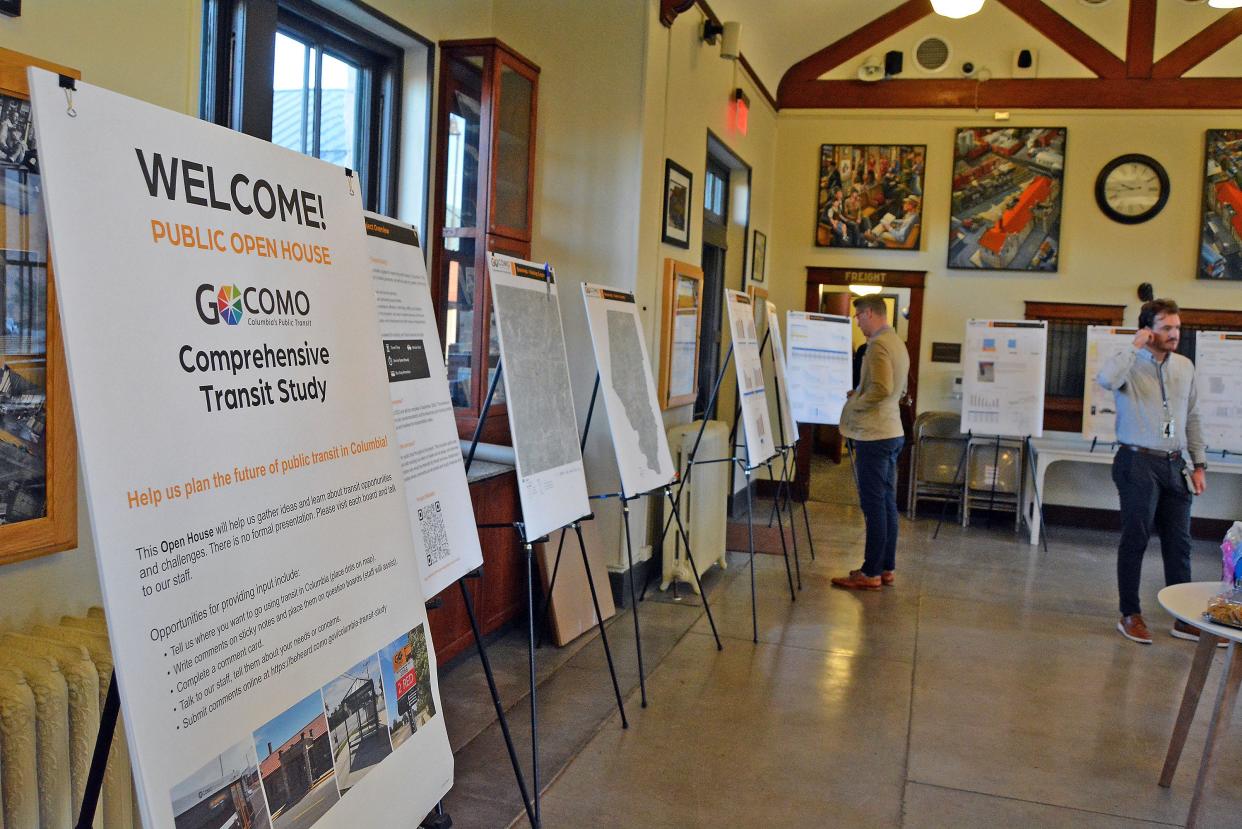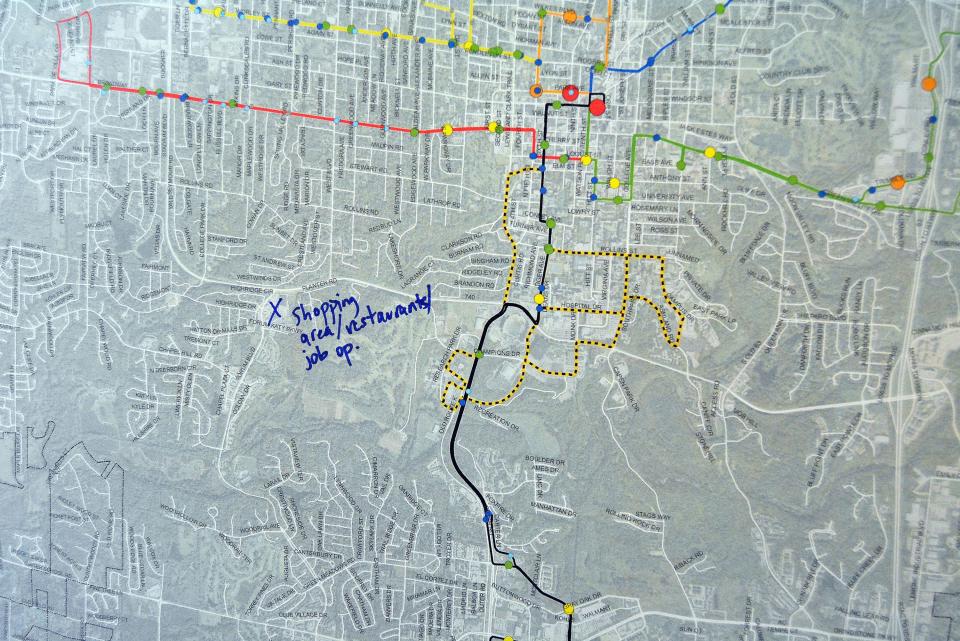Columbia transit study looking at 'big issues, challenges, goals' of Go CoMo

What do community members want to see in the public transit system, Go CoMo? That was one of the big questions Tuesday during an open-house meeting at Wabash Bus Station as the city undertakes a roughly yearlong comprehensive transit study.
Go CoMo has faced significant strains due to lack of drivers leading to a route compression in August, meaning the three combined routes now take upward of 90 minutes, rather than the 45 minutes when there were six fixed routes.
The city continues to consult with Olsson Associates for the transit study. This was the same company that conducted the 2016 transit survey, where residents favored the hub-and-spoke system the city uses.
Through the study and depending on what Olsson recommends, the city could once again see significant changes to how people access the city's transit system.
"Right now we are learning about the system and we are learning about what people need and want," said Shawn Strate, Olsson senior transportation planner, adding his team spent about four hours Tuesday riding the buses and taking rider surveys. "What are the big issues, challenges and goals?"
For those that missed Tuesday's open house, comments also can be submitted through the Columbia Transit Study page on BeHeardCoMo through Nov. 28. Strate also is accepting comments directly at sstrate@olsson.com.
The top transit issues
Top issues from the ride-along included the route compression, extending bus service hours (including adding in Sundays) and bringing back service to the Paris Road corridor.
This was echoed by Gabi Jacobs, who attended Tuesday's meeting and also provided written feedback.
"Hopefully this (transit study) is something that makes public transit more of a readily available option. I hope, change wise, our buses could be more frequent and have it available longer throughout the day," she said, adding longer hours could help people get to evening meetings or home from jobs that go later in the day.
While a route does go to to the Whitegate neighborhoods off of Paris Road, it doesn't go farther north on Paris and no longer covers Mexico Gravel Road, either. That change happened in 2018.
This has led to the Columbia City Council approving a roughly $400,000 grant through American Rescue Plan Act funds for a first mile/last mile valet service as a means of workforce support, which could help with the Paris Road/Route B industrial corridor where the only way to access it is by car, cab or rideshare service.
Olsson is looking at several demographics in its initial stages of the study. This includes looking at population numbers of those with a disability, below the poverty line, whether a person has one personal vehicle or no vehicle and general income level, among others.

This will help Olsson make recommendations on service type, such as returning to a flex system. This is a system with fixed bus routes and sections of town where people have to call and schedule a ride within the flex area. This is the system the city had adopted in 2017.
This concerns resident John Trapp, who through 4-A-Change, consults and partners with the city on poverty and unsheltered issues. He sees a flex system as being beneficial to those who don't regularly rely on the city's transit system.
"There is no economic mobility without public transit. We need routes that go more place, more often. I think what they'll end up doing is more dial-a-ride. That isn't a regular schedule. It will serve the better off people and leave the rest behind and further bifurcate Columbia," he said.
Next steps
After looking through all the data from Tuesday's public meeting and other factors, "we'll go back and put some ideas together, and some alternatives and go back out and do another phase of public outreach. Here is what we have come up with based on what we have heard," Strate said.
More: Columbia bus route compression starts in August with no clear end date
This also may mean going back to requiring fares for bus rides, which was part of 2024 budget discussion, but ultimately was not part of the final budget. The city, since early 2020 has been fare free.
Looking at the city's transit system, on a per hour basis, it is an efficient service Strate said. However, when parsing out the data looking at the entire system overall, there is not a lot available.
"The service that does run, it runs pretty efficiently compared to peer cities. That wasn't something I was aware of going into it, so that has been interesting, he said.
More: How the city is looking to fill upward of 25 CDL solid waste, bus operator positions
Charles Dunlap covers local government, community stories and other general subjects for the Tribune. You can reach him at cdunlap@columbiatribune.com or @CD_CDT on Twitter. Subscribe to support vital local journalism.
This article originally appeared on Columbia Daily Tribune: Go CoMo hosts public meeting at Wabash Bus Station on transit study

